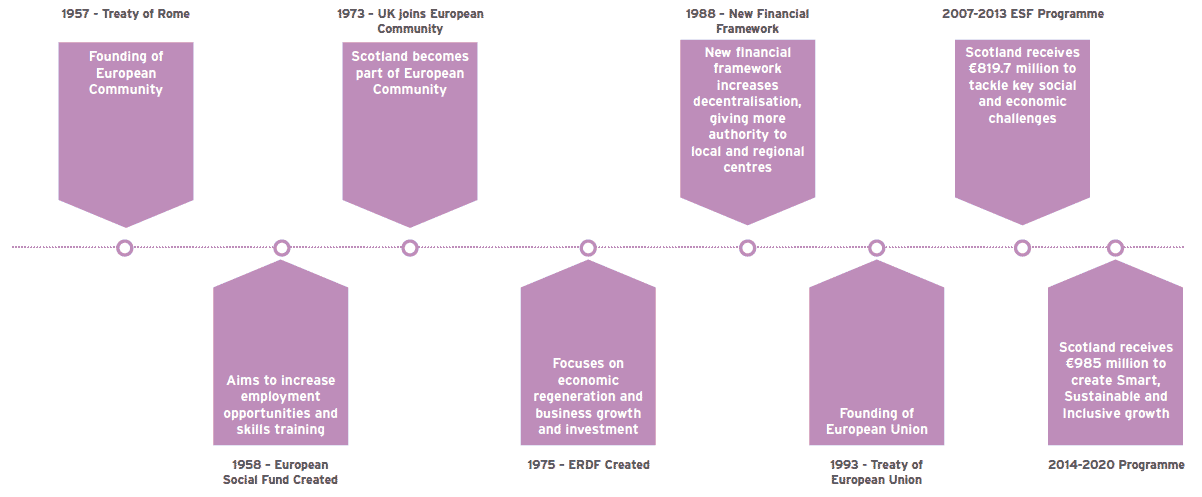European Structural Funds: A smart, sustainable and inclusive Scotland in Europe
An overview of the 2007-2013 programmes and an introduction to the 2014-2020 programmes with case studies from both the European Social Fund and European Regional Development Fund.
What are European Structural Funds?
What are they?
European Structural Funds provide EU Member States with financial assistance to overcome structural deficiencies, increase competitiveness and employment. They are designed to reduce the development gap between EU regions and to create equal living standards for all EU inhabitants.
What Do The Funds Do For Scotland?
The funding strengthens the competitive advantage of the EU, ensuring it is an innovative and knowledge-intensive part of the world.
For Scotland this means a multimillion pound funding stream designed to grow Scottish business, create new jobs, increase workforce skills and training, and provide funding for energy-efficiency activities.
In this way the funds contribute to the strategic aims of the European Commission and the Scottish Government's strategic objectives of creating a greener, smarter, wealthier and fairer Scotland.
How Do They Work?
European Structural Funds are split into two categories - the European Regional Development Fund and the European Social Fund. Both of these operate on a seven-year cycle and use a series of large-scale programmes to deliver long-term strategic objectives.
- European Regional Development Fund (ERDF) was established in 1975 to aid business growth, investment and infrastructure. ERDF also has a particular focus on creating jobs;
- European Social Fund (ESF) was set up in 1958 to build human capital. Its main focus is on people who are unemployed and disadvantaged funding new training activities and initiatives to bring them into working life.
The amount of EU funding varies from region to region depending on the challenges faced by individuals and communities. In Scotland the funds serve two distinct areas.
Where Are The Funds Distributed?
- Highlands & Islands - the Scottish Highlands, Orkney, Shetland and the Western Isles. Challenges faced by the Highlands and Islands include low population density, a widely dispersed enterprise base and low GDP.
- Lowlands & Uplands - Eastern Scotland, North-East Scotland and South-Western Scotland.
The distribution of European Structural Funds across these distinct parts of Scotland ensures a wide range of groups, communities and businesses can benefit from European funding.
Evolution of Scotland in Europe

Contact
There is a problem
Thanks for your feedback